

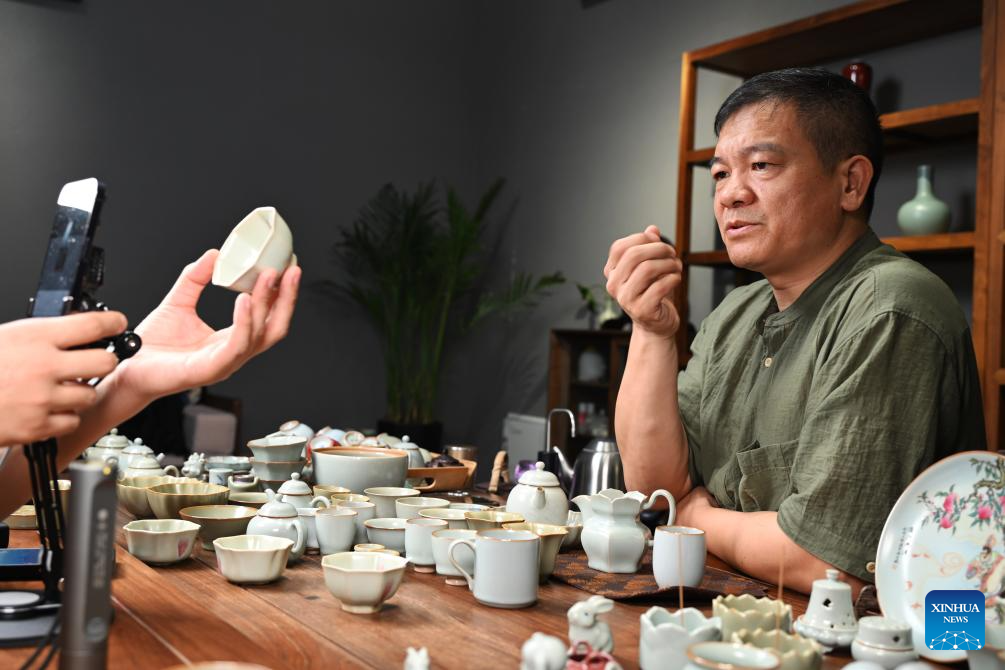
Li Shanming promotes his Ru porcelain products through live streaming at the studio of his workshop in Jingdezhen, east China's Jiangxi Province, Aug. 28, 2024.
Ru porcelain, one of the famous kinds of porcelain during the Song Dynasty (960-1279) in ancient China, always impresses its viewers with the jade-like color of the sky.
In Jingdezhen of east China's Jiangxi Province, 45-year-old Li Shanming is a ceramic craftsman dedicated to the art of Ru porcelain, which originated in Henan Province.
Li defines himself as a Hunan native who came to Jingdezhen to make Henan porcelain. Born and raised in Yongzhou of central China's Hunan Province, Li spent his early days in the fields and left his hometown with friends to work in Xiamen after a few years of vocational training. He started as a ceramic painter in an art and craft factory and later learned sculpture from the factory's craftsmen. After a few years of training, Li gradually fell in love with the art of clay.
In 2005, Li started his ceramic career in Jingdezhen, a city known as China's "porcelain capital." Initially, he assisted artists in carving ceramic works. Over time, Li established his workshop, which focused on producing daily-use porcelain for export. However, Li always aims higher. In 2009, he took several of his porcelain works to Shanghai, where they received widespread acclaim, strengthening his confidence to create his own brand.
Despite being in Jingdezhen, a place famous for blue-and-white porcelain, Li chose Ru porcelain to establish his brand. "Ru porcelain is elegant and reserved, which resonates with my personality," Li said.
In Li's view, the natural color of Ru porcelain is the most touching yet most challenging to reproduce. The sky-blue color of Ru porcelain requires agate for the glaze, which must be in the right shade of blue, smooth, and jade-like. To recreate the beauty of Ru porcelain, Li not only visited the Palace Museum in Beijing to study exhibits but also sought materials in Henan. Without a glaze formula, he made numerous attempts in his kilns, adjusting the percentage of agate and kiln temperature each time. Sometimes, an entire kiln would yield no satisfactory pieces.
In 2012, the Ru porcelain works of Li gained recognition at an international ceramic expo, establishing him as a prominent figure of Ru porcelain in Jingdezhen. He named his brand after the Chinese character "Shan," which means "goodness," in his name. To ensure quality, any porcelain with minor flaws is discarded and smashed. Li also integrates traditional ceramic techniques of other kinds of porcelains, such as blue-and-white porcelain and famille-rose porcelain, into Ru porcelain works, developing his unique style.
Looking ahead, Li aims to create more affordable porcelain products, bringing ceramic culture into every household and expanding its reach overseas, allowing more people to experience the charm of Chinese ceramics. (Xinhua/Sui Shangjun)

A set of Ru porcelain artworks of Li Shanming, themed on twelve different flowers, is seen at the exhibition area of his workshop in Jingdezhen, east China's Jiangxi Province, Aug. 28, 2024. (Xinhua/Sui Shangjun)
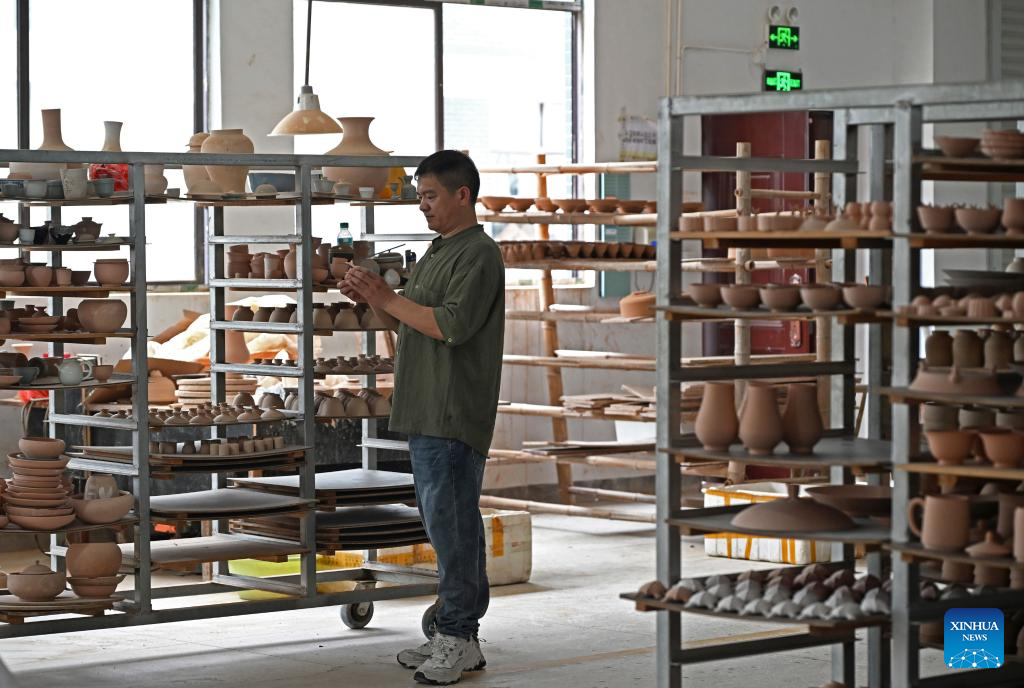
Li Shanming checks the condition of Ru porcelain products at his workshop in Jingdezhen, east China's Jiangxi Province, Aug. 28, 2024. (Xinhua/Sui Shangjun)
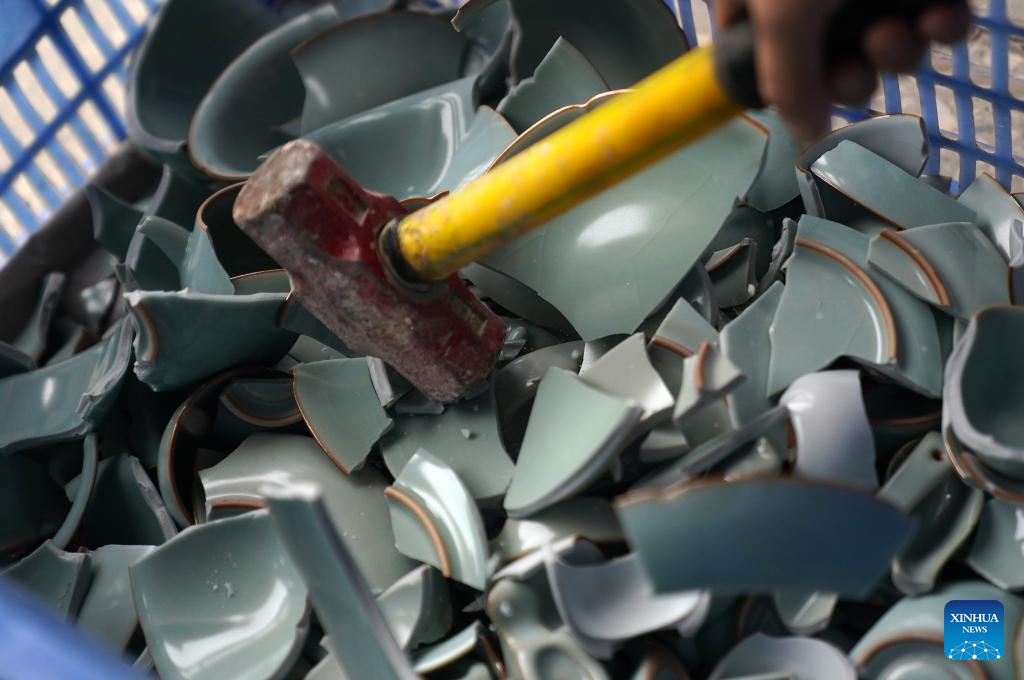
This photo shows smashed porcelain with flaws at the workshop of Li Shanming in Jingdezhen, east China's Jiangxi Province, Aug. 28, 2024. (Xinhua/Wan Xiang)
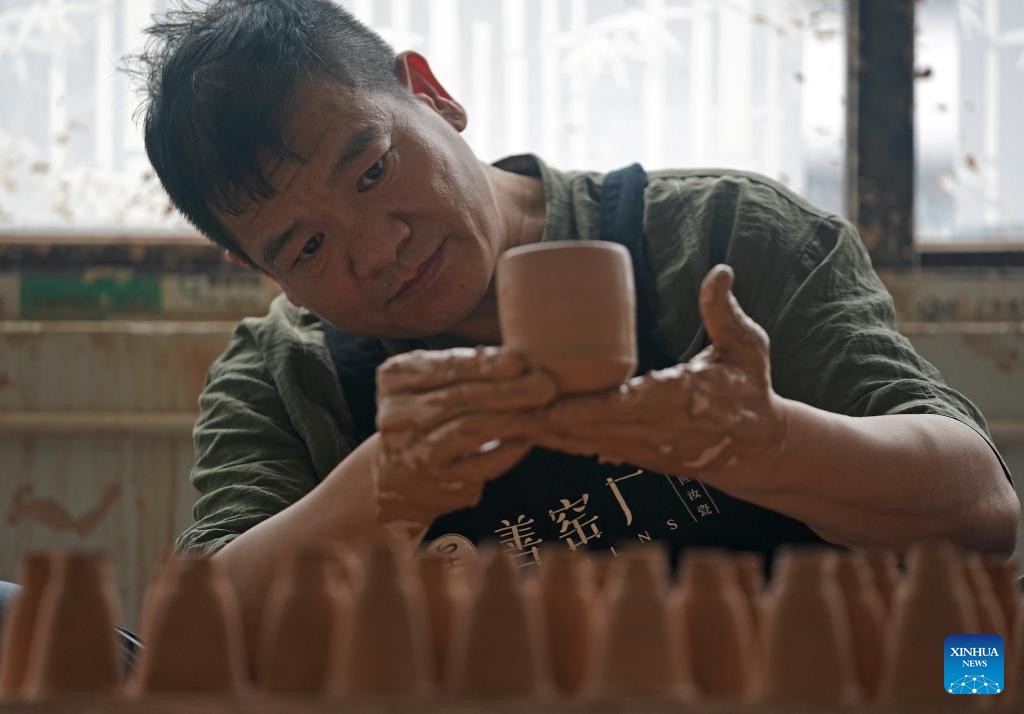
Li Shanming molds clay at his workshop in Jingdezhen, east China's Jiangxi Province, Aug. 28, 2024.(Xinhua/Wan Xiang)
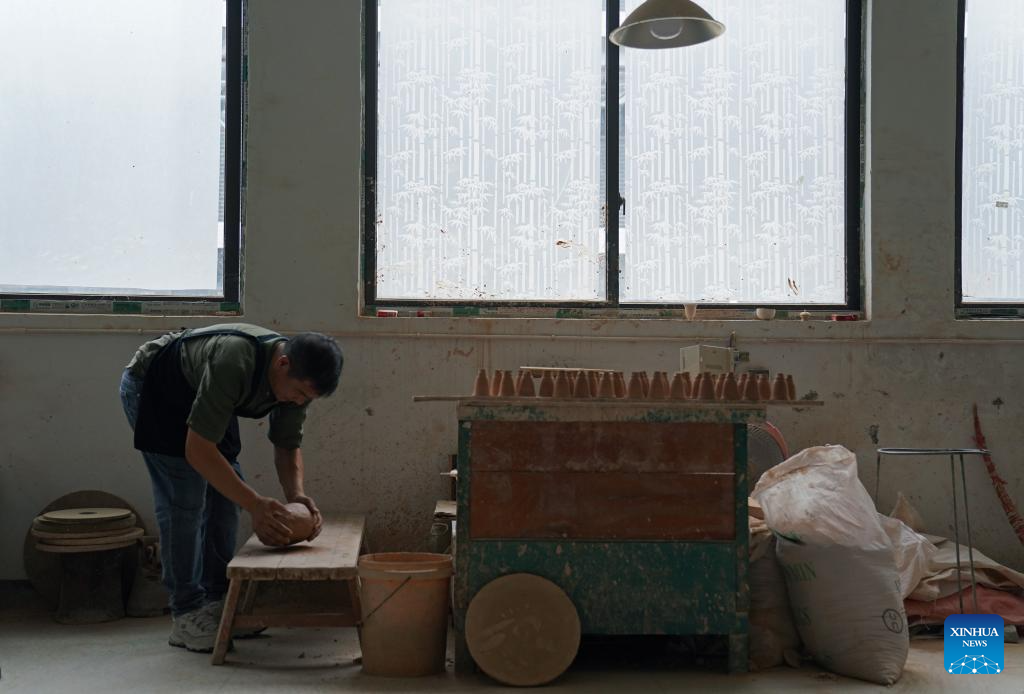
Li Shanming prepares clay for porcelain making at his workshop in Jingdezhen, east China's Jiangxi Province, Aug. 28, 2024. (Xinhua/Wan Xiang)
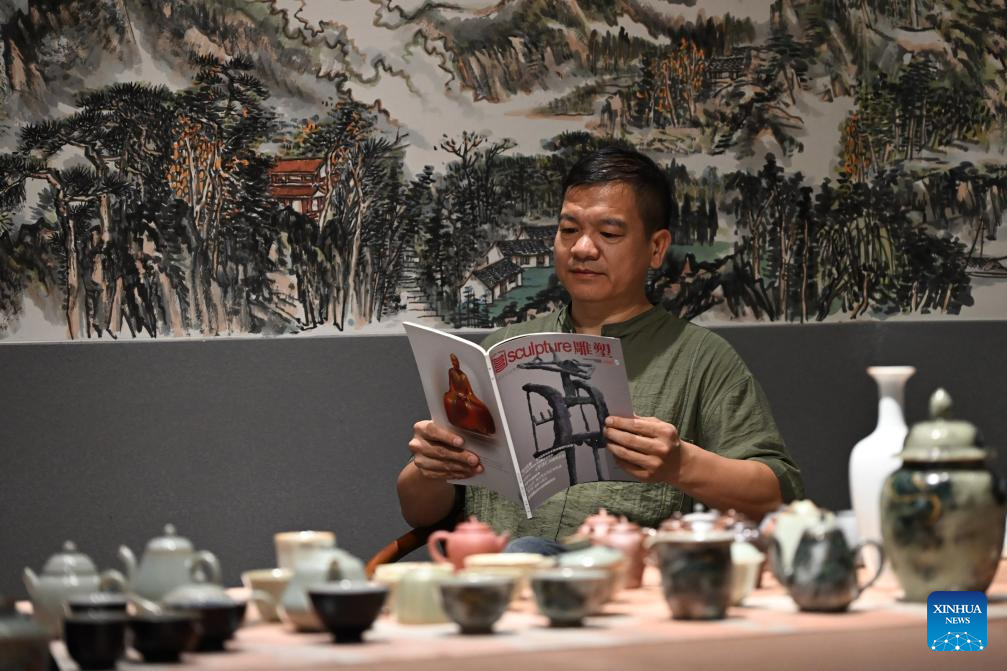
Li Shanming reads a magazine at the studio of his workshop in Jingdezhen, east China's Jiangxi Province, Aug. 28, 2024.(Xinhua/Sui Shangjun)
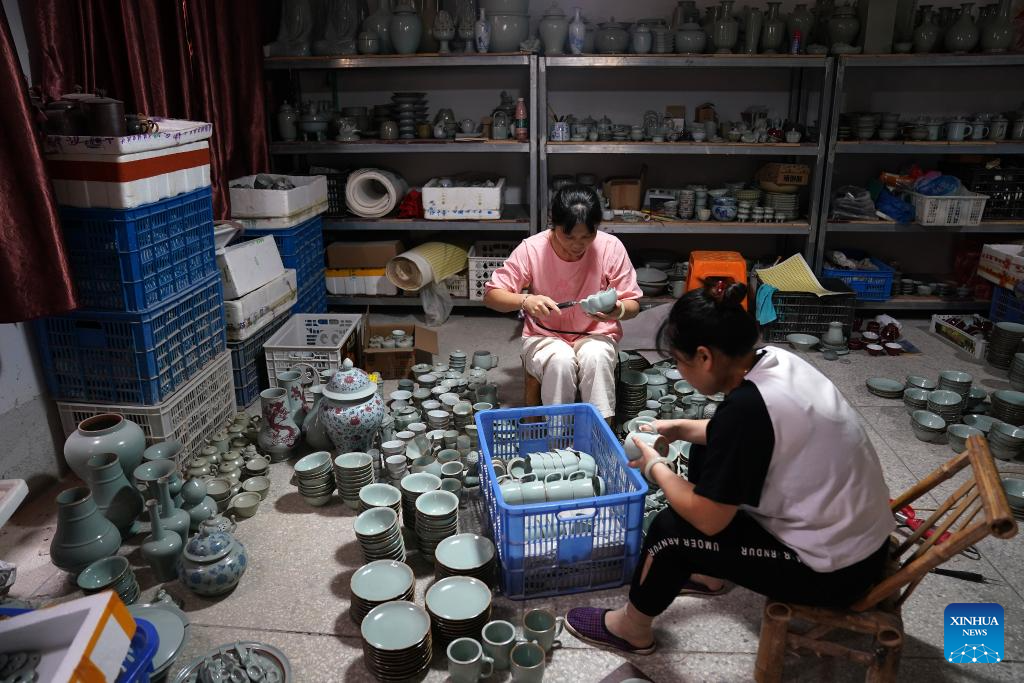
Workers check the quality of Ru porcelain products at the workshop of Li Shanming in Jingdezhen, east China's Jiangxi Province, Aug. 28, 2024.(Xinhua/Wan Xiang)
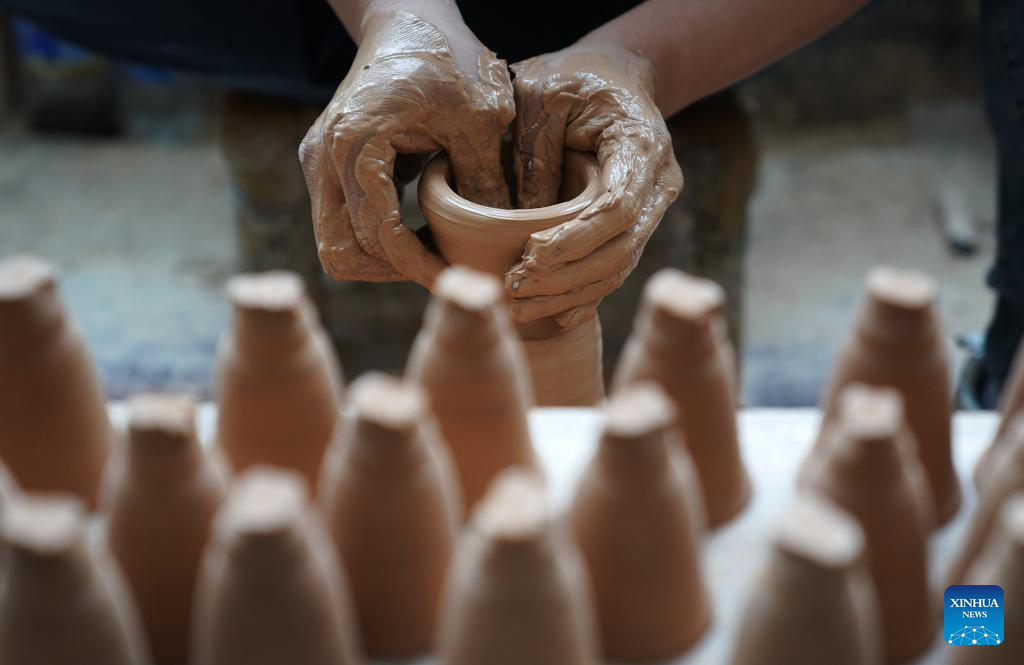
Li Shanming molds clay at his workshop in Jingdezhen, east China's Jiangxi Province, Aug. 28, 2024. (Xinhua/Wan Xiang)
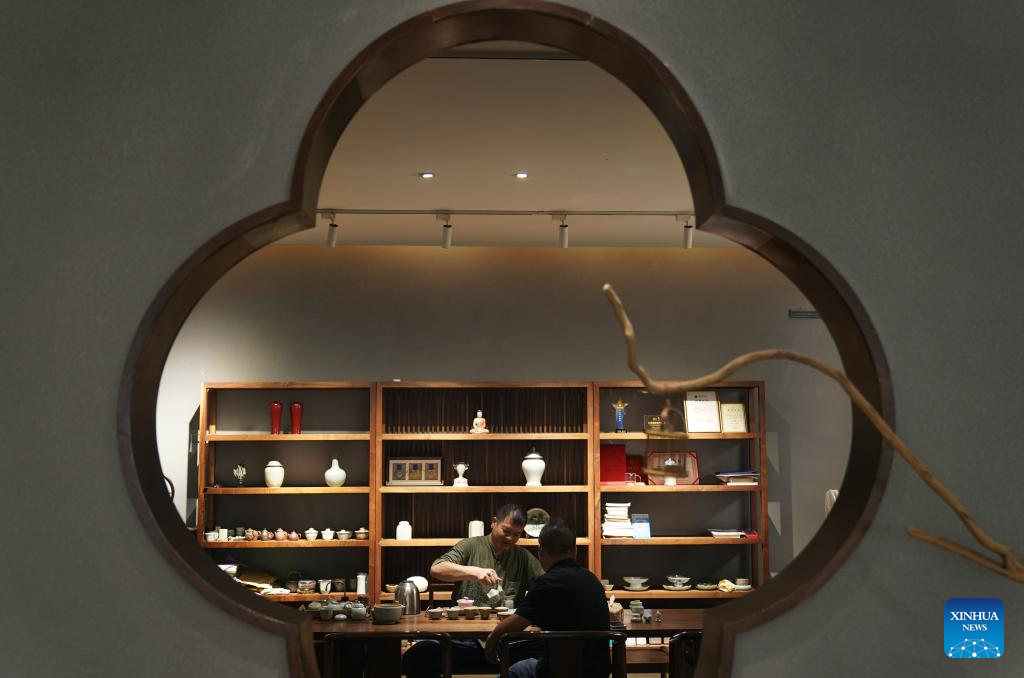
Li Shanming (L) uses a self-made Ru porcelain tea set to drink tea with his friend at the exhibition area of his workshop in Jingdezhen, east China's Jiangxi Province, Aug. 28, 2024. (Xinhua/Wan Xiang)
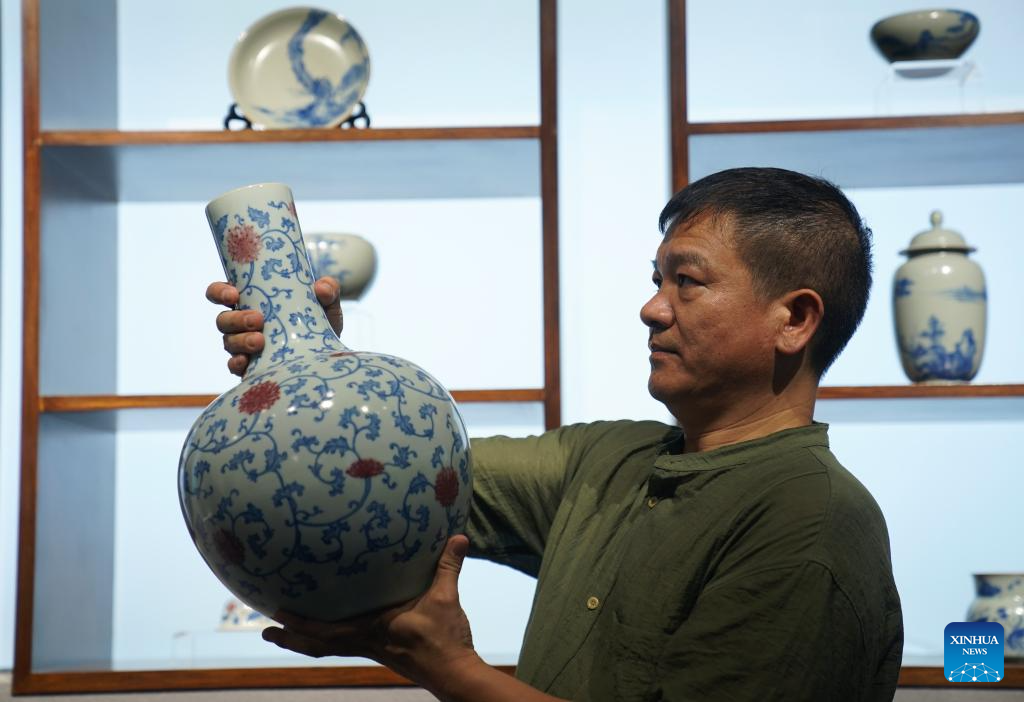
Li Shanming gazes at a Ru porcelain artwork at the exhibition area of his workshop in Jingdezhen, east China's Jiangxi Province, Aug. 28, 2024. (Xinhua/Wan Xiang)
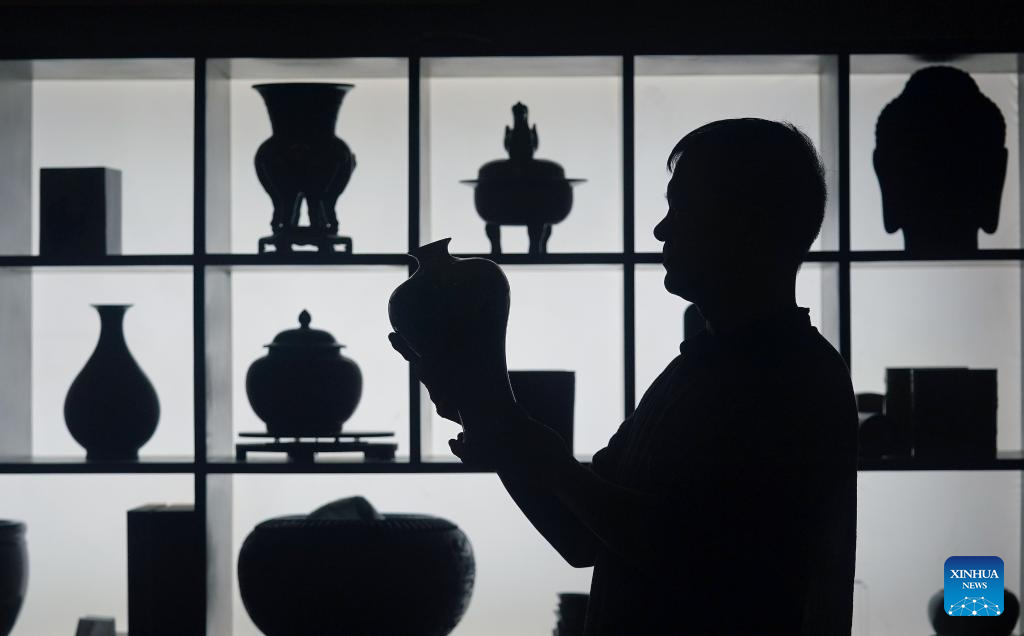
Li Shanming gazes at a Ru porcelain artwork at the exhibition area of his workshop in Jingdezhen, east China's Jiangxi Province, Aug. 28, 2024.(Xinhua/Wan Xiang)
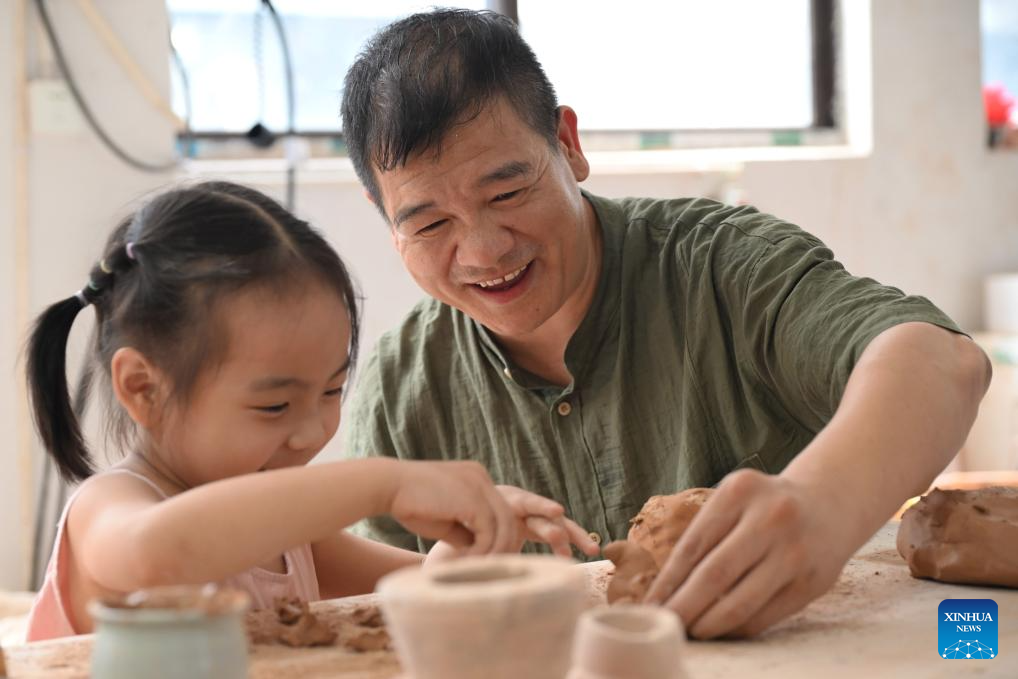
Li Shanming (R) plays with his daughter at his workshop in Jingdezhen, east China's Jiangxi Province, Aug. 28, 2024. (Xinhua/Sui Shangjun)
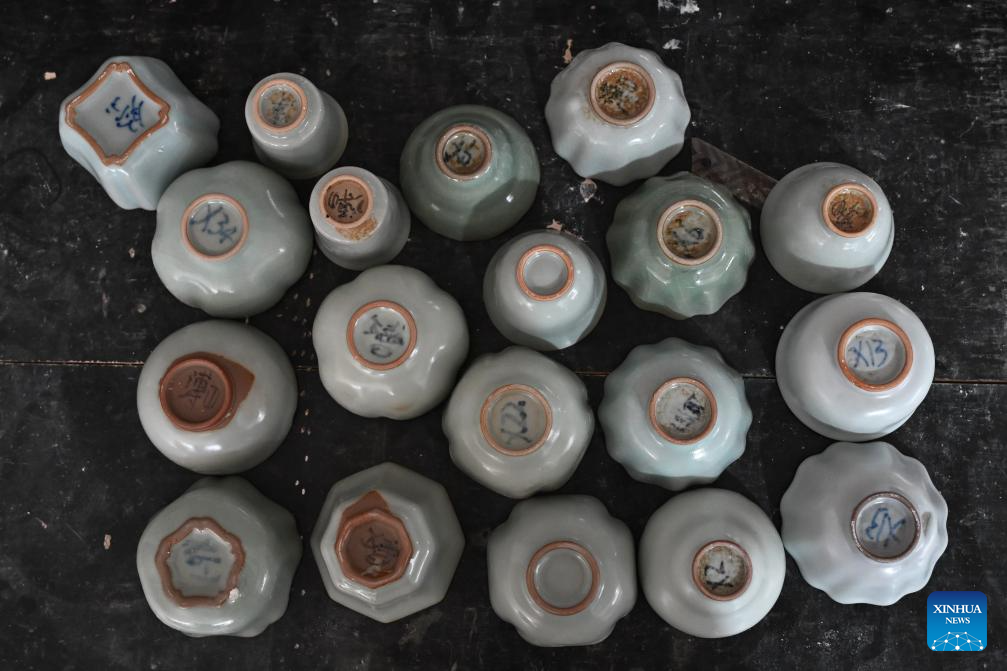
The experimental Ru porcelain products are seen at the workshop of Li Shanming in Jingdezhen, east China's Jiangxi Province, Aug. 28, 2024. (Xinhua/Sui Shangjun)
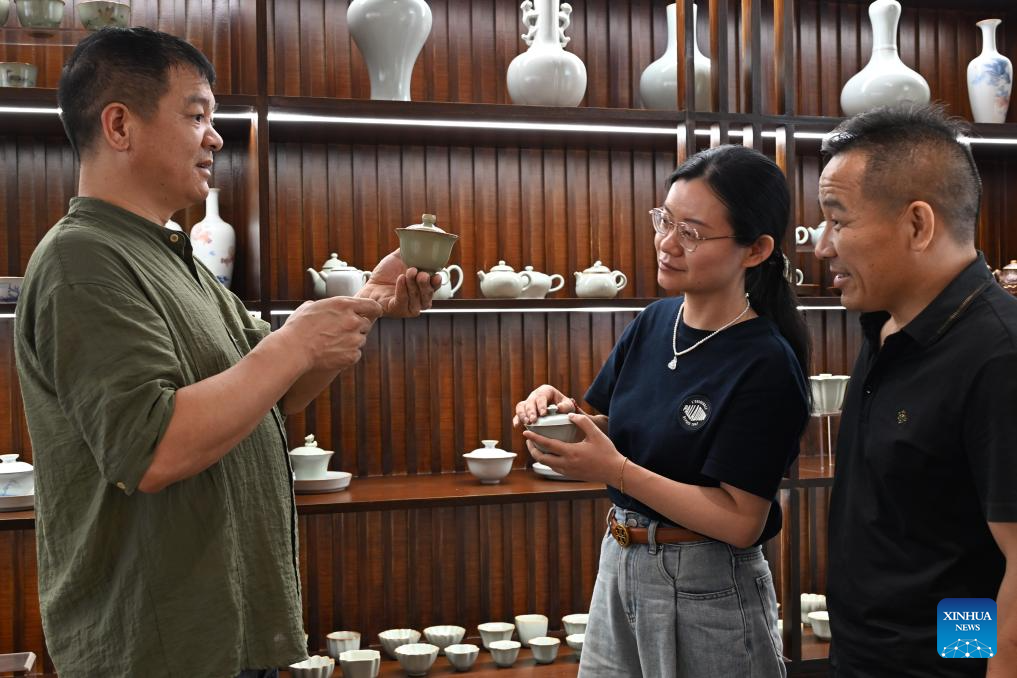
Li Shanming (1st L) introduces Ru porcelain products to visitors at the exhibition area of his workshop in Jingdezhen, east China's Jiangxi Province, Aug. 28, 2024.(Xinhua/Sui Shangjun)
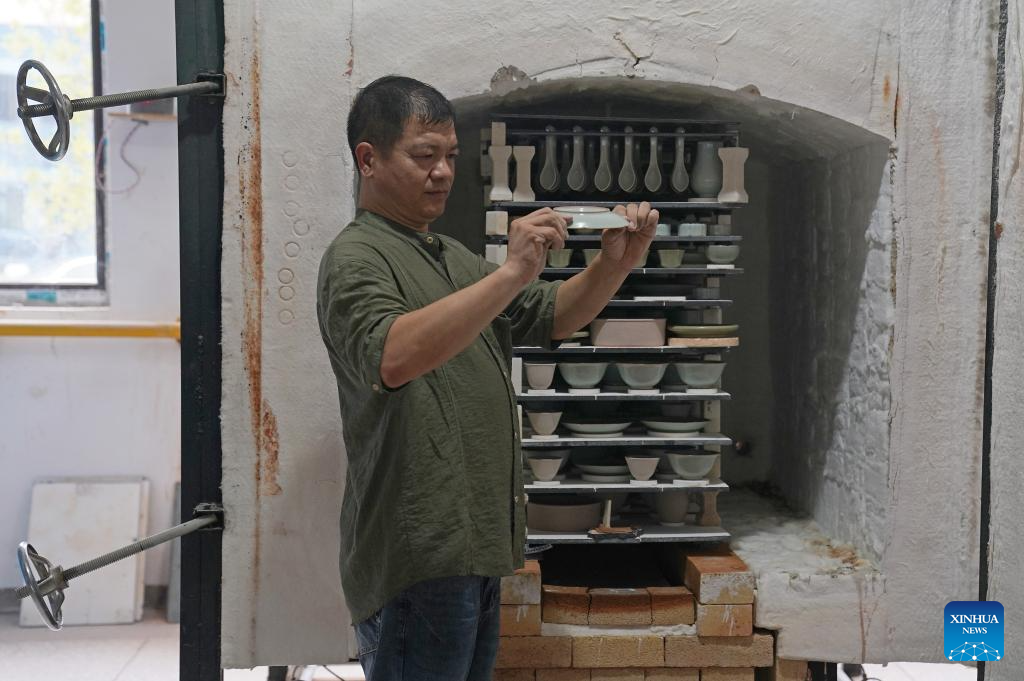
Li Shanming checks the condition of Ru porcelain products in front of a kiln at his workshop in Jingdezhen, east China's Jiangxi Province, Aug. 28, 2024. (Xinhua/Wan Xiang)
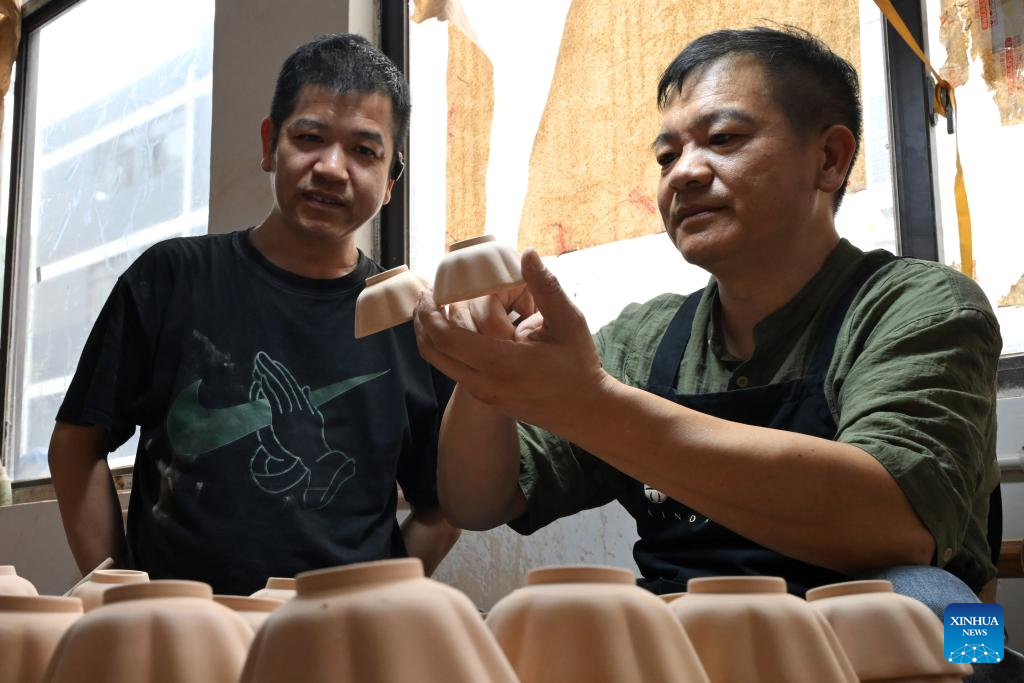
Li Shanming teaches an apprentice the technique of shaping clay molds at his workshop in Jingdezhen, east China's Jiangxi Province, Aug. 28, 2024. (Xinhua/Sui Shangjun)
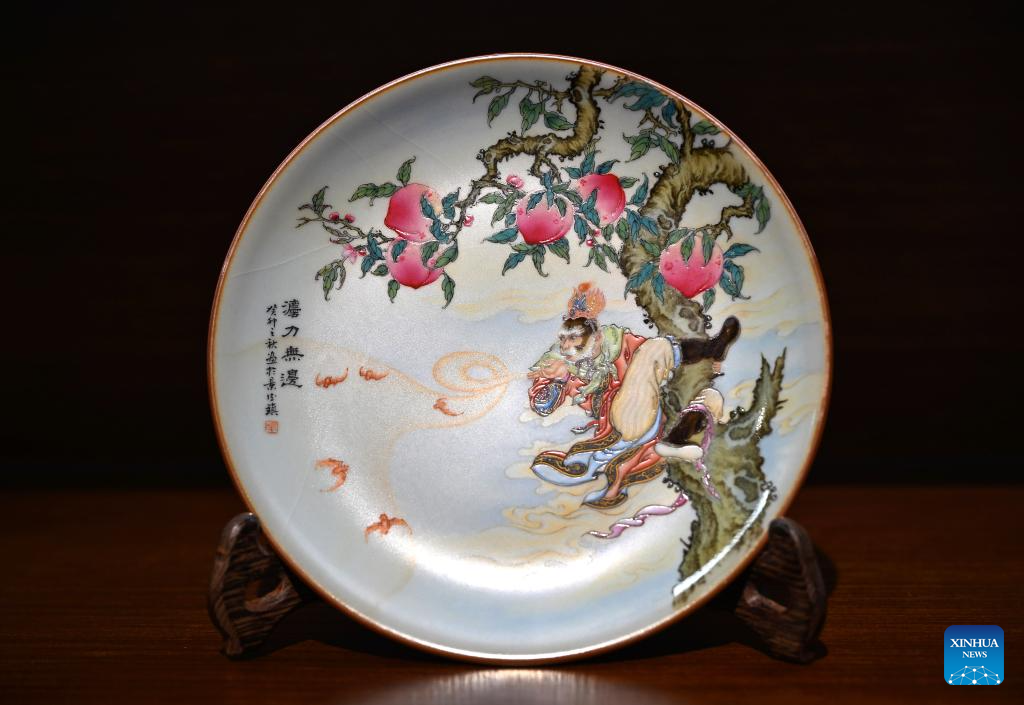
A Ru porcelain artwork of Li Shanming, themed on classic Chinese novel "Journey to the West," is seen at the exhibition area of his workshop in Jingdezhen, east China's Jiangxi Province, Aug. 28, 2024. (Xinhua/Sui Shangjun)

Li Shanming (R) communicates drawing techniques with a ceramic painter at his workshop in Jingdezhen, east China's Jiangxi Province, Aug. 28, 2024. (Xinhua/Wan Xiang)
点击右上角![]() 微信好友
微信好友
 朋友圈
朋友圈

请使用浏览器分享功能进行分享
